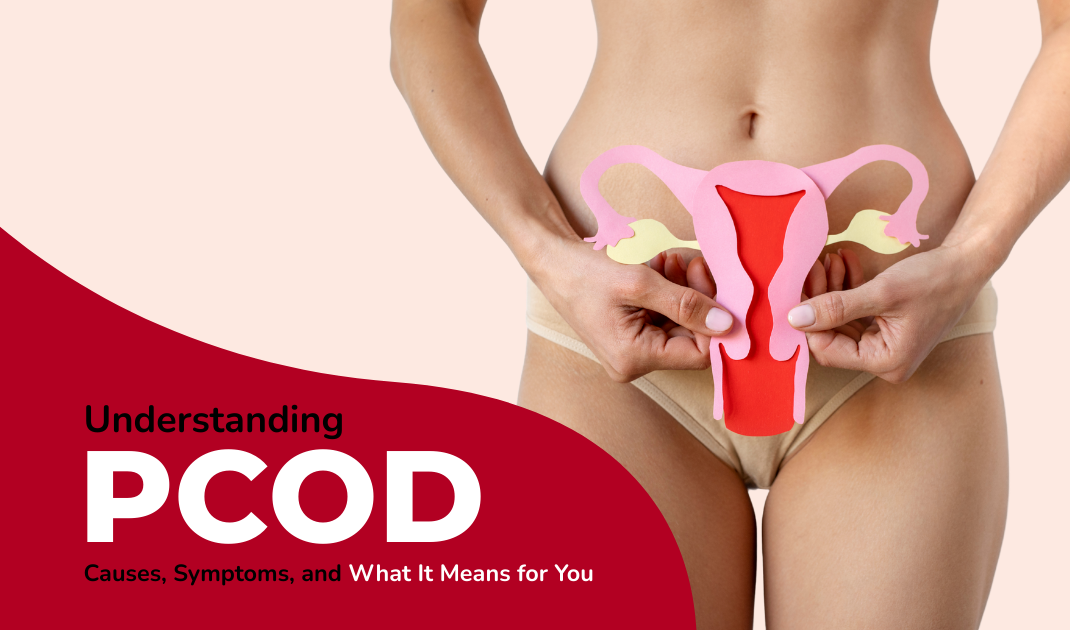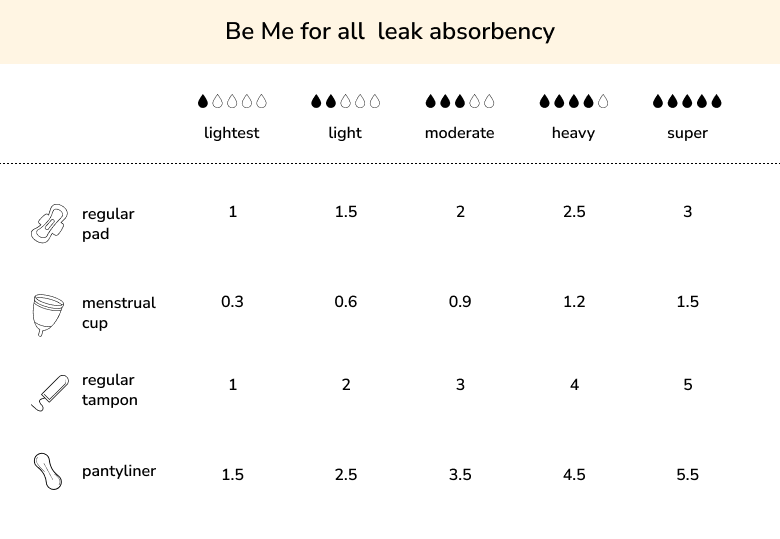
Understanding PCOD: A Comprehensive Guide to Its Causes, Symptoms, and What It Means for You
Published At
Polycystic Ovarian Disease, commonly known as PCOD, is a condition that affects a significant number of women worldwide, yet it often remains misunderstood. It's more than just an occasional missed period; it's a complex hormonal disorder that can impact various aspects of a woman's health, from her menstrual cycle and fertility to her appearance and long-term well-being. This comprehensive guide aims to shed light on what PCOD is, its common symptoms, underlying causes, and why understanding this condition is crucial for proactive health management. Many women use tools like a period calculator online to track their cycles, which can be an early indicator if irregularities associated with PCOD arise.
What Exactly is PCOD (Polycystic Ovarian Disease)?
PCOD is a condition where the ovaries produce many immature or partially mature eggs, which over time can develop into cysts. While the name suggests cysts are the primary issue, the core of PCOD lies in an imbalance of reproductive hormones. This imbalance is a key aspect of PCOD, often involving androgens and insulin.
Defining PCOD: More Than Just Cysts on Ovaries
In PCOD, the ovaries may become enlarged and contain multiple small fluid-filled sacs (follicles that haven't matured properly). These are often referred to as cysts, giving the condition its name. However, it's important to note that not all women with PCOD will have visibly cystic ovaries on an ultrasound, and not all ovarian cysts mean a woman has PCOD. The condition primarily involves a disruption in the normal ovulation process due to these hormonal imbalances, affecting the regularity predicted by even the most accurate period calculator.
The Hormonal Imbalance at the Heart of PCOD
PCOD is characterized by an imbalance in sex hormones. Typically, women with PCOD have higher levels of androgens (male hormones like testosterone) than normal, and sometimes insulin resistance plays a key role. This hormonal disruption interferes with the development and release of eggs from the ovaries (ovulation), leading to many of the condition's symptoms, including period cramps that might feel different or more intense. Understanding this hormonal aspect is key because it dictates how PCOD is diagnosed and managed.
Briefly: PCOD vs. PCOS - Understanding the Terminology
You might also hear the term Polycystic Ovary Syndrome (PCOS). While often used interchangeably, some medical professionals distinguish between PCOD and PCOS. PCOS is generally considered a more severe metabolic disorder and is diagnosed based on a broader set of criteria (Rotterdam criteria), which often includes evidence of hyperandrogenism, ovulatory dysfunction, and polycystic ovaries on ultrasound. PCOD is sometimes viewed as a precursor or a milder form where hormonal imbalances and resulting symptoms are present. For clarity, this guide uses PCOD to discuss the common condition involving ovarian dysfunction and hormonal issues. Always consult a healthcare professional for an accurate diagnosis.
Recognizing the Telltale Signs: Common Symptoms of PCOD
The symptoms of PCOD can vary widely from person to person in both type and severity. Some women experience mild symptoms, while others face more significant challenges. Being aware of these common signs of PCOD can help in seeking timely medical advice.
Irregular Menstrual Cycles: The Most Common Red Flag
One of the most prominent symptoms of PCOD is an irregular menstrual cycle. This is a direct result of infrequent or absent ovulation, making tools like a period cycle calculator less predictable.
What constitutes an irregular period?
Irregular periods can mean:
- Infrequent periods (oligomenorrhea): Fewer than 8 periods a year, or cycles longer than 35 days. This makes using a next period date calculator challenging.
- Absent periods (amenorrhea): No periods for three or more consecutive months.
- Prolonged or heavy bleeding during periods when they do occur. For heavy flow days, considering options like Reusable Period Panty or even a Menstrual Cup can be helpful.
- Unpredictable bleeding patterns.
Managing unpredictable flow can be challenging. Products like Hiphugger reusable period panties or Organic Sanitary Pads can offer comfort and reliability.

Why PCOD affects menstruation
The hormonal imbalances in PCOD, particularly the elevated androgens and potential insulin resistance, disrupt the delicate signaling pathway that governs the maturation and release of an egg each month. Without regular ovulation, the uterine lining doesn't shed predictably, leading to irregular cycles.
Skin Manifestations: Acne and Oily Skin in PCOD
Increased androgen levels can cause the sebaceous glands in the skin to produce more oil (sebum). This excess oil, combined with dead skin cells, can clog pores and lead to persistent acne, particularly on the face, chest, and upper back. Oily skin is also a common complaint among women with PCOD.
Hirsutism: Understanding Excessive Hair Growth
Hirsutism refers to the growth of coarse, dark hair in a male-like pattern on areas such as the face (chin, upper lip), chest, abdomen, back, and thighs. This is another direct consequence of higher-than-normal androgen levels. For managing unwanted facial hair, some women explore options like a Mini Facial Hair Remover for convenience.
Hair Thinning and Hair Loss: The Impact on Scalp Hair
Paradoxically, while androgens can cause excess hair growth on the body, they can also lead to thinning of hair on the scalp, often referred to as androgenic alopecia or female pattern hair loss. This typically manifests as diffuse thinning, particularly at the crown of the head.
Weight Fluctuations and Difficulty Losing Weight with PCOD
Many women with PCOD struggle with weight gain or find it very difficult to lose weight. This is often linked to insulin resistance, where the body's cells don't respond effectively to insulin, leading to higher insulin levels in the blood. Elevated insulin can promote fat storage and increase appetite.
Acanthosis Nigricans: Darkening of the Skin in Folds
This condition causes patches of skin to become dark, thick, and velvety. It typically appears in body folds and creases, such as the neck, armpits, groin, and under the breasts. Acanthosis nigricans are often a sign of insulin resistance.
Delving into the Roots: What Causes PCOD?
The exact cause of PCOD is not fully understood, but it's believed to be a combination of genetic and environmental factors. Several key contributors have been identified, leading to the symptoms and causes of PCOD/PCOS being a focus of much research.
Genetic Predisposition: Is PCOD Hereditary?
PCOD often runs in families, suggesting a strong genetic component. If your mother or sister has PCOD, your risk of developing it is higher. Researchers are working to identify the specific genes involved. According to the World Health Organization (WHO), genetics play a significant role in PCOS (which has overlapping features with PCOD).
The Role of Insulin Resistance in PCOD Development
Insulin is a hormone produced by the pancreas that helps your body use sugar (glucose) from food for energy. When cells become resistant to insulin's effects, the pancreas compensates by producing even more insulin. High levels of insulin can stimulate the ovaries to produce more androgens, contributing to the hormonal imbalance seen in PCOD. Insulin resistance affects a large percentage of women with PCOD, regardless of their weight.
Chronic Low-Grade Inflammation and its Link to PCOD
Studies have shown that women with PCOD often have a type of low-grade inflammation. This inflammation may stimulate the ovaries to produce androgens and can also contribute to insulin resistance and an increased risk of cardiovascular issues. The source of this inflammation is still being researched.
Lifestyle Factors: How Diet, Stress, and Activity Levels Play a Part
While not direct causes, certain lifestyle factors can exacerbate PCOD symptoms or increase the risk of developing the condition if there's a genetic predisposition. A diet high in processed foods and sugar, a sedentary lifestyle, and chronic stress can contribute to insulin resistance, inflammation, and hormonal imbalances. Managing stress and discomfort, sometimes with aids like Cramp Comfort for period related pain, can be part of a holistic approach.

How Doctors Diagnose PCOD
Diagnosing PCOD involves a combination of medical history review, physical examination, blood tests, and sometimes an ultrasound. There isn't a single definitive test for PCOD; a thorough evaluation is necessary to understand your period cycle length calculator variations and other symptoms.
The Importance of Medical History and Symptom Review
Your doctor will ask detailed questions about your menstrual cycle (like if you need to use an online period calculator to keep track), family history of PCOD or diabetes, and any symptoms you're experiencing, such as acne, hair growth, or weight changes. This information is crucial for guiding the diagnostic process.
Key Hormonal Blood Tests for PCOD Diagnosis
Blood tests are used to measure the levels of various hormones, including:
- Androgens (like testosterone)
- Luteinizing Hormone (LH) and Follicle-Stimulating Hormone (FSH) - the LH:FSH ratio might be altered.
- Thyroid hormones (to rule out thyroid dysfunction, which can mimic PCOD symptoms)
- Prolactin
- Blood glucose and insulin levels (to check for insulin resistance)
Pelvic Ultrasound: Visualizing the Ovaries
A pelvic ultrasound (transvaginal or abdominal) can create images of the ovaries. The doctor will look for the presence of multiple small follicles (often described as a "string of pearls" appearance) and assess the size of the ovaries. However, as mentioned earlier, not all women with PCOD will have polycystic-appearing ovaries, and not all women with such ovaries have PCOD.
Why Early Understanding and Awareness of PCOD Matters
Understanding PCOD and seeking an early diagnosis is vital for managing symptoms and preventing potential long-term health complications. Early detection of PCOD symptoms allows for timely intervention.
Potential Long-Term Health Considerations Associated with PCOD
If left unmanaged, PCOD can increase the risk of developing other health problems later in life, including:

Knowing about these potential long-term implications of PCOD can empower individuals to take proactive steps toward managing their health effectively.
Empowering Yourself Through Knowledge and Proactive Care
Learning about PCOD, its symptoms, and causes is the first step towards taking control of your health. With this knowledge, you can have more informed discussions with your healthcare provider, understand the rationale behind recommended lifestyle changes or treatments, and feel more empowered to manage your condition effectively. For those experiencing discomfort such as period cramps, which can sometimes be associated with PCOD-related menstrual issues, exploring options like the Cramp Comfort PRO device might be beneficial after consulting with a doctor.
Next Steps: Living Well with PCOD
While there is no cure for PCOD, its symptoms can be managed effectively, especially with early diagnosis and a comprehensive management plan. Understanding your PCOD is the first step to a better quality of life.
Emphasizing consultation with healthcare professionals
If you suspect you have PCOD or are experiencing any of the symptoms described, it's crucial to consult a healthcare professional (like a gynecologist or endocrinologist). They can provide an accurate diagnosis, rule out other conditions, and develop a personalized management plan tailored to your specific needs and symptoms. They can also guide you on whether products like Tampons or Applicator Tampons are suitable for you if your flow changes.
A note on how understanding PCOD is the first step to managing it effectively.
Understanding PCOD is not just about knowing a medical term; it's about understanding your own body and how to best support its needs. This knowledge empowers you to make informed decisions, advocate for your health, and work collaboratively with your healthcare team to live a healthy and fulfilling life, even with PCOD.
We hope this guide has provided valuable insights into PCOD. For more information or to explore products that can support your well-being, please browse our website or contact us. If you have any questions about managing your menstrual health with PCOD, consider exploring our range of period care products, including comfortable options like Mid Brief period panties or Seamless period panties.










